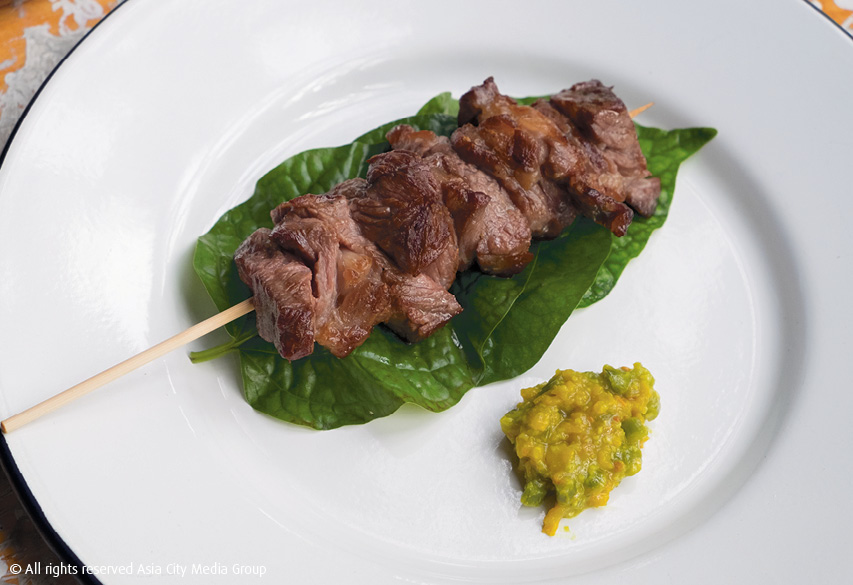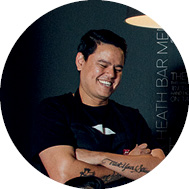Chalermpon “Van” Rohitratana
The dish: Grilled koji beef with wild betel leaf and spicy paste (B340).
What goes in it: Beef shoulder from Surin smeared with a mix of fish sauce and koji rice for six hours, then chilled for two nights. Eat it with star gooseberry paste and pickled wasabi tinged with finger root and coconut sugar.
How it works: Koji rice pulls out the umami taste, breaks down the tissue and tenderizes the protein, almost as if it’s been dry-aged.
49 Phra Athit Rd., 081-406-3773. Open Tue-Sun 5pm-midnight
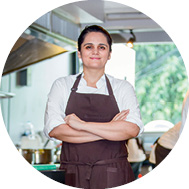
Garima Arora
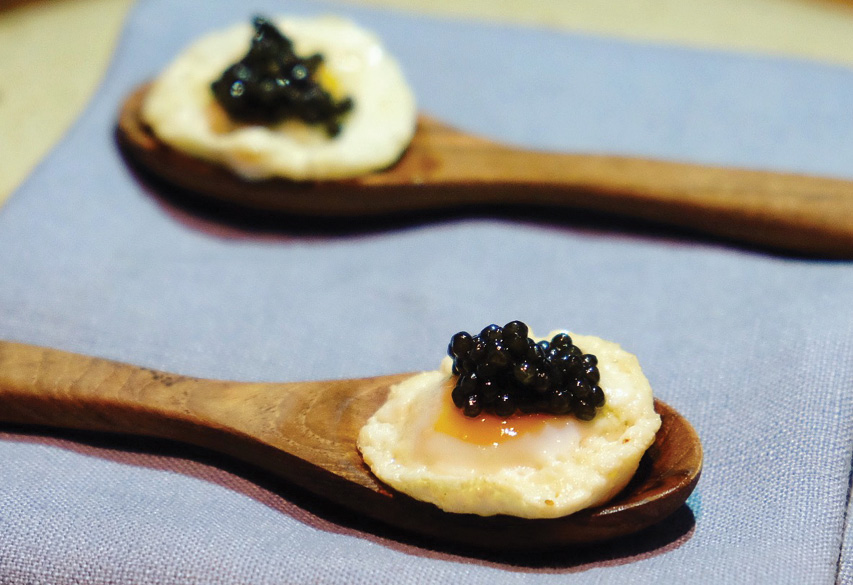
The dish: Quail egg (part of the ten-course tasting menu, B2,200).
What goes in it: Beef garum with quail egg in a takoyaki grill pan.
How it works: Garum is fish sauce that’s been used as a food condiment since ancient Greece. At Gaa, Thai beef is fermented with salt and a koji starter for 8-12 months to break down the protein into amino acids, which gives it an umami taste.
68/4 Soi Lang Suan, 091-419-2424. Open daily 6-11:30pm. BTS Phloen Chit
Nattaphong “Tom” Saehu
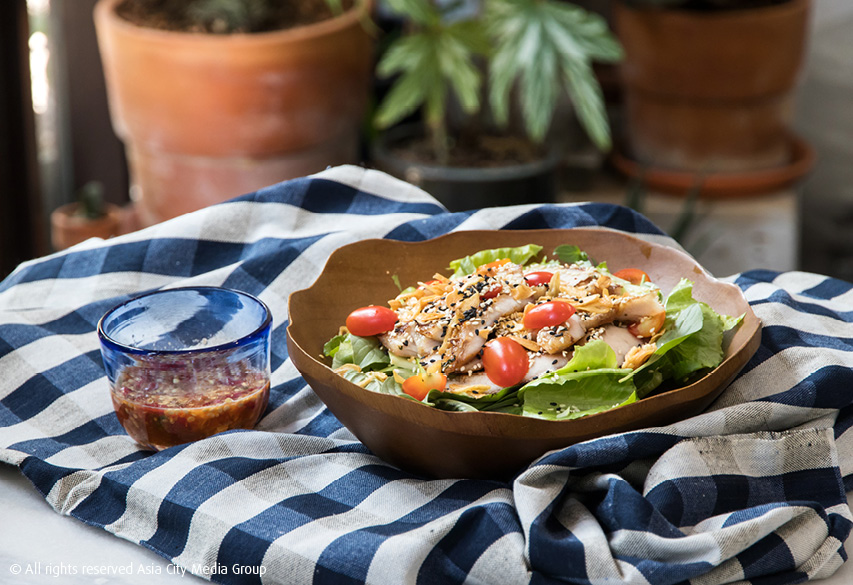
The dish: Pad plara songkreung (B135).
What goes in it: Stir-fried plara chunks with herbs and spices like lemongrass and kaffir lime.
How it works: Phed Phed is among the few Thai restaurants that makes its own plara (fermented fish) Nakorn Panom-style (in which young rice bran is added in the fermentation process) instead of buying watery fresh market kinds. There are three kinds of plara in Nakorn Panom, with a different use. The one used for pad plara songkreung is fermented for almost a year as a solid chunk, which is preferable to a liquid because you get bite of true plara.
Phahon Yothin Soi 8, 097-918-1175. Open Mon-Sat 11am-8pm. BTS Ari

Napol “Joe” Jantraget
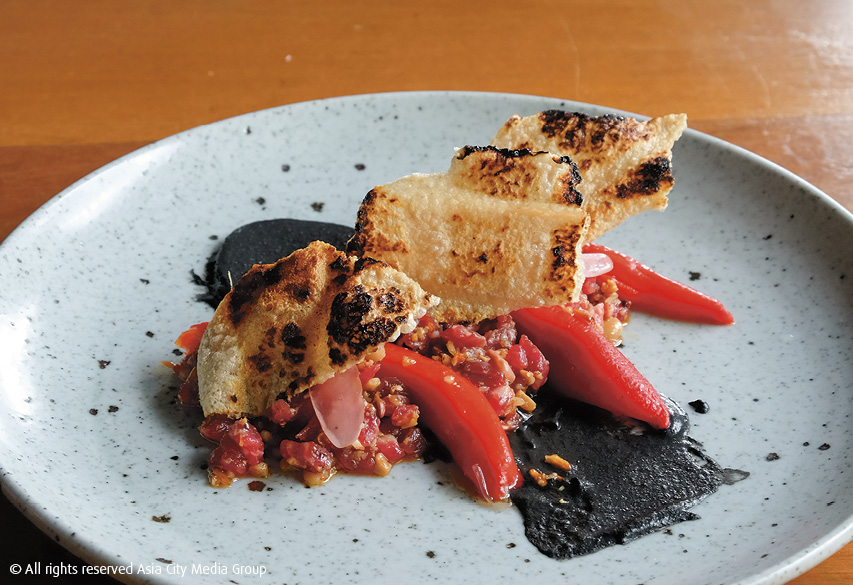
The dish: Buffalo tartare (B400).
What goes in it: Northern-style fermented soy beans with herbs, mixed with raw, chopped buffalo meat and vinegar. It’s served with goat horn chilies and crushed buffalo skin crackling chips.
How it works: Soy beans are fermented with koji powder and herbs for 45 hours, which blends well with the tanginess of grape vinegar and the unique whiff of buffalo meat.
1052-1054 Charoen Krung Rd., 087-593-1936. Open Wed-Sun 6pm-midnight; Mon 6pm-midnight
Chalee Kader
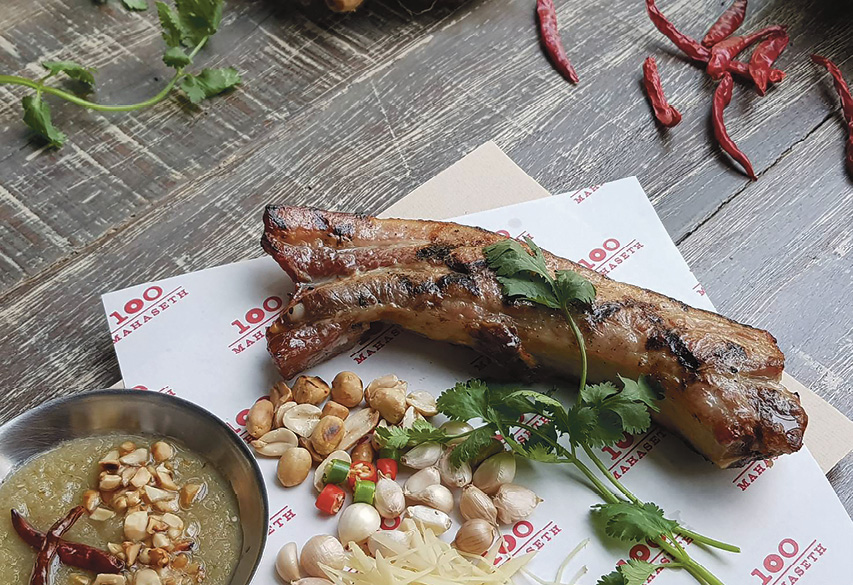
The dish: Fermented pork ribs (B250).
What goes in it: Whole pork ribs from Sloane’s, specifically the part adjoining the pork belly, which are fermented with cooked rice, and seasoned with coriander root and garlic.
How it works: Using the traditional Isaan fermentation method for naem (sour pork sausage), Chalee ferments the meat for a week. The added sugar helps the protein break down, while the cooked rice gives it a pleasantly mouthwatering sourness. He also makes his own dried meat and fish sauce from Siam mud carp and salt, fermented for about six months in-house at 100 Mahaseth.
100 Mahaset Rd., 02-235-0023. Open daily 6-11pm
BK ASKS

What’s the big fuss about fermentation?
Chef Phanuphon “Black” Bulsuwan’s peers know him as the local master of fermentation techniques. Here, the 34-year-old chef-owner of Blackitch Artisan Kitchen in Chiang Mai breaks down the process.
How did you get into fermentation?
For decades, my family made shrimp paste, fish sauce and vinegar for sale in Rayong. My aunt is certified as a professor regarding research into enzymes and alternative medicines. I started making my own products with miso five years ago.
What do people misunderstand about fermentation?
People are taught to eat freshly cooked food, so they see fermentation as lower-class stuff not fit for civilized people. They also think fermented products are too acidic and not good for your intestine. None of that’s true. There are various methods to ferment stuff, and they’re good as long as they’re chemical free. It’s about food preservation. Parma ham or other dried meats are other examples of preserved foods.
Is it true that fermentation concentrates the benefits of the ingredients?
It’s true and I believe the best way to do it is to ferment with vinegar. The fermentation process breaks the matter into smaller parts so that your body can absorb it more easily and instantly use it. But too much of something can be bad, so you should know how much to eat and what to eat it with. Very sour pieces, for example, should be eaten with honey to reduce the acidity.
What people should know before attempting fermentation at home?
Hygiene is the most important part. You need to observe for mold or abnormal changes in color. If you’re not sure about a change or a weird-colored mold growing, you can check if it’s safe to be eaten at any lab at any of the universities. This is how I check, too. You should also keep your fermented goods away from sunlight to prevent active mold growing, unless of course you’re fermenting sun-dried meat.
Nimmanhemin Soi 7, 092-587-9979. Open daily 11am-2pm, 6-10pm

